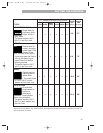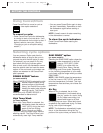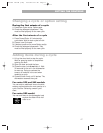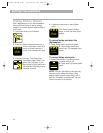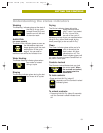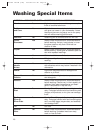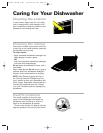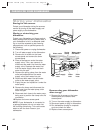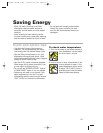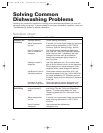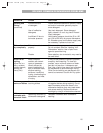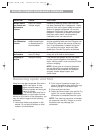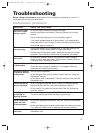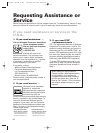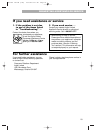
Saving Energy
• Wash full loads. Running a half-filled
dishwasher uses the same amount of
electricity and hot water as a fully loaded
machine.
• Load correctly for best washing results.
Incorrect loading may cause poor washing
and the need to rewash all or part of load.
Cycle and option tips
• Use the Low Energy cycle whenever
possible. The cycle uses less hot water
and energy than the Normal Wash cycle.
• Use the Delay Hours feature to run your
dishwasher during off-peak hours. Local
utilities recommend avoiding heavy usage of
energy at certain times of day.
• Use the Air Dry option whenever possible.
Allow longer drying times (overnight). Use
a rinse agent to improve drying.
• Do not use the POWER SCOUR
TM
feature
or SANI RINSE
TM
option if it is not needed.
• Loads may not wash or dry as well if the
water temperature is too low. For best
dishwashing results, water must be at least
120°F (49°C) as it enters the dishwasher.
To check water temperature:
1. Run the hot water at the faucet closest to
your dishwasher. Let the water
run for at least 1 minute.
2. Hold a candy or meat thermometer in the
running stream of water. If the
water temperature at the faucet
is below 120°F (49°C), have a
qualified person raise the water
heater’s thermostat setting.
23
• Do not prerinse normally soiled dishes.
Select the correct cycle for the load
and use the recommended amount of
detergent.
8051225 v06 EN (c28) 10/6/98 9:47 AM Page 23



